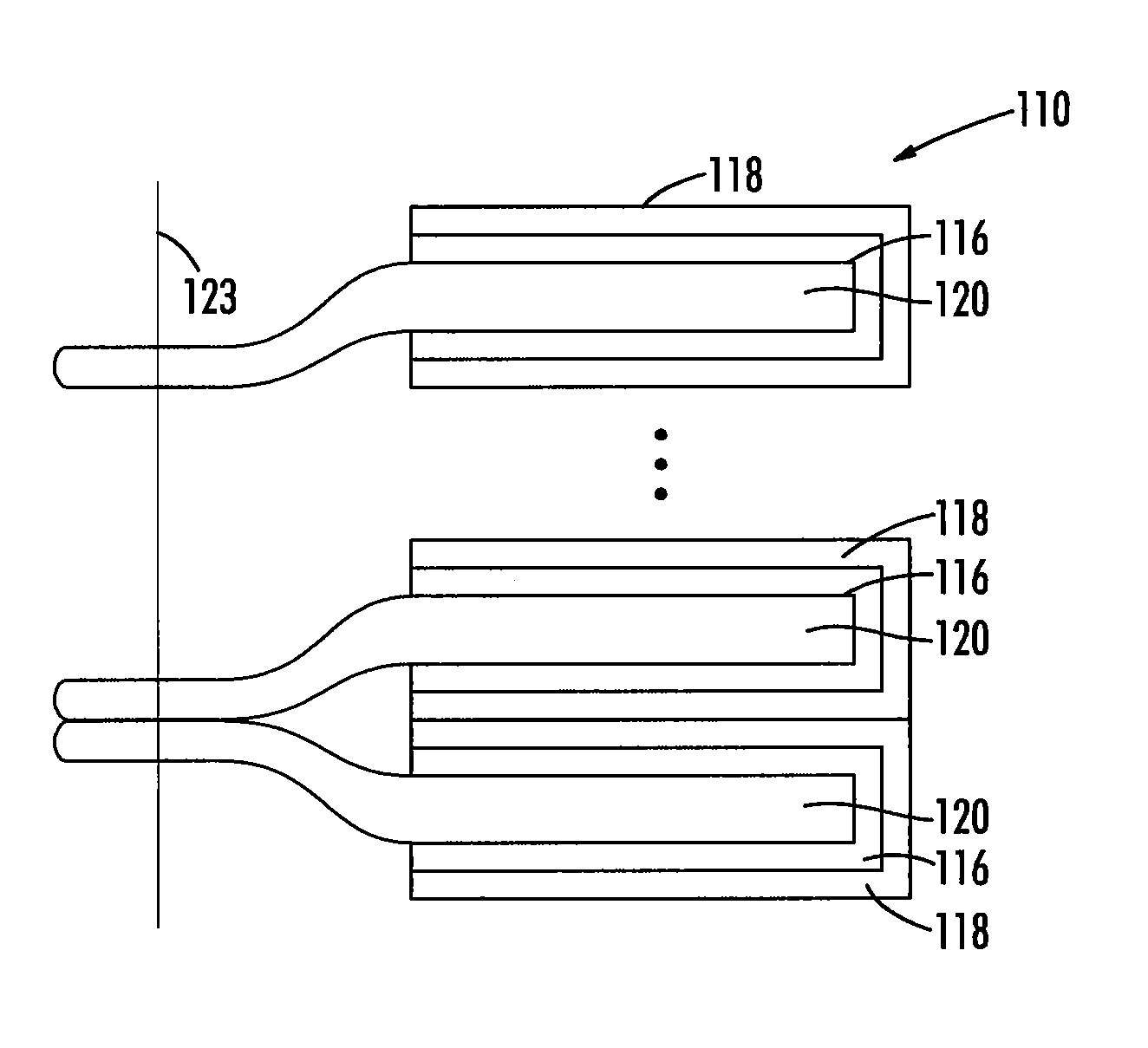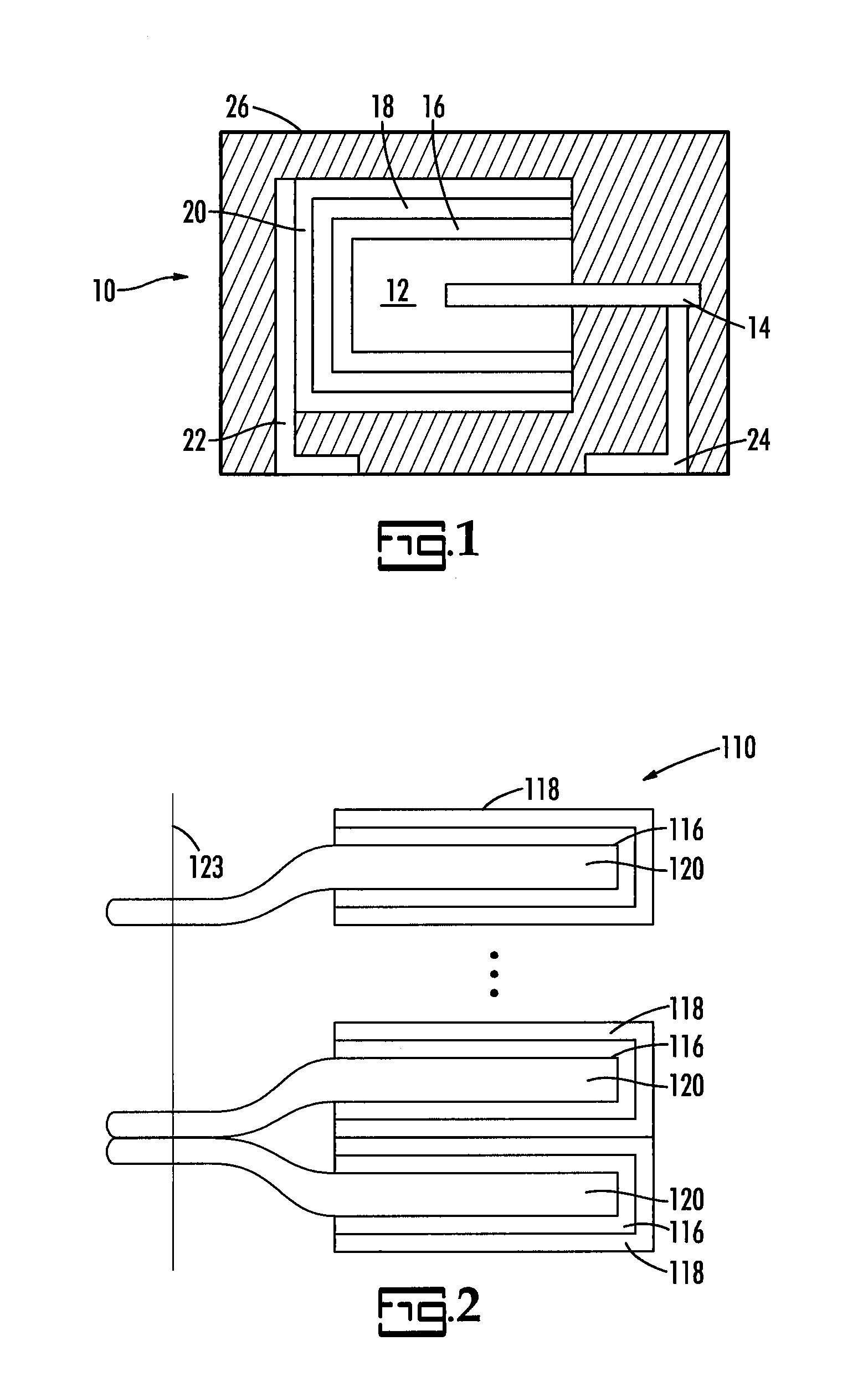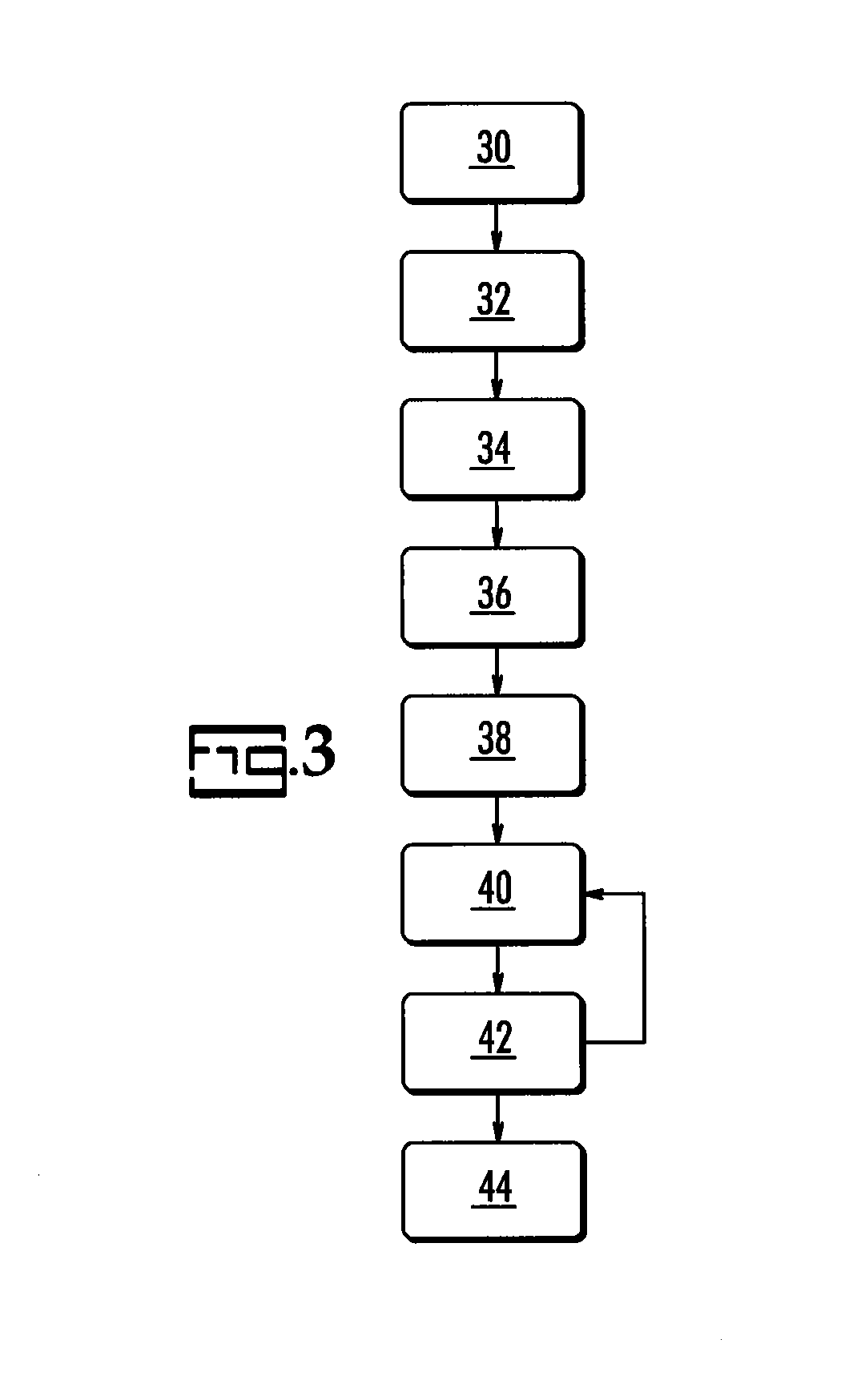Process for producing electrolytic capacitors and capacitors made thereby
a technology of electrolytic capacitors and capacitors, which is applied in the manufacture of electrolytic capacitors, liquid electrolytic capacitors, electrolytic capacitors, etc., can solve the problems of poor processability, conductive polymer capacitors, and relatively low working voltage compared to wet electrolytic counterparts, so as to improve corner and edge coverage and good corner and edge coverage
- Summary
- Abstract
- Description
- Claims
- Application Information
AI Technical Summary
Benefits of technology
Problems solved by technology
Method used
Image
Examples
##ventive example 1
Inventive Example 1
[0048]A series of tantalum anodes were prepared with a diameter of 5.2 mm and a length of 10.7 mm comprising a tantalum lead wire. Tantalum oxide dielectric was formed on the surface in accordance with the teachings of U.S. Pat. No. 5,716,511. The anodes with dielectric were immersed in a dilute PEDT dispersion with very small particle sizes, available as Clevios® Knano from Haraeus, for 1 minute and dried at 150° C. for 20 minutes. They were then dip-coated with 6% sorbitol solution in water and dried at 90° C. for 20 minutes. They were then dip-coated using a PEDT slurry, available as Clevios®K from Haraeus, to form an external polymer layer. The dip-coating with sorbitol solution followed by PEDT slurry dipping was repeated three more times. The optical photograph of the coated anode is provided in FIG. 4 wherein external anode coating covers the edges adequately.
control example 1
[0049]Anodes which were identical to those of Inventive Example 1 where coated in analogous fashion with the exception that the coating of sorbitol was deleted. The optical photograph of the anode is provided in FIG. 5 wherein the coverage of the top and bottom edges is poor with some exposed dielectric visible.
##ventive example 2
Inventive Example 2
[0050]Aluminum foil coupons with etched porous structure were anodically formed to 11 volts for a rated working voltage of 6.3 volts. They were immersed in a solution of ethylenedioxythiophene (EDT) in isopropanol. The isopropanol was evaporated at 40° C. for 2 minutes. The coupons were then dipped in an aqueous solution of ammonium persulfate (APS) with dispersed particles of sodium anthroquinone sulfonate (SAQS). EDT in contact with APS and SAQS was allowed to polymerize for 6 minutes. This chemical oxidative polymerization step was repeated multiple times to build the conductive polymer on the surface inside the pores. The anodes were dip-coated using a PEDT slurry (Clevios® K from Heraeus) to form the first layer of an external polymer. They were then immersed in an aqueous solution of 7% sorbitol for 1 minute and dried at 90° C. for 20 minutes. Next they were dip-coated using a PEDT slurry (Clevios® K from Heraeus). Carbon and silver containing conductive coa...
PUM
| Property | Measurement | Unit |
|---|---|---|
| melting point | aaaaa | aaaaa |
| melting point | aaaaa | aaaaa |
| melting point | aaaaa | aaaaa |
Abstract
Description
Claims
Application Information
 Login to View More
Login to View More - R&D
- Intellectual Property
- Life Sciences
- Materials
- Tech Scout
- Unparalleled Data Quality
- Higher Quality Content
- 60% Fewer Hallucinations
Browse by: Latest US Patents, China's latest patents, Technical Efficacy Thesaurus, Application Domain, Technology Topic, Popular Technical Reports.
© 2025 PatSnap. All rights reserved.Legal|Privacy policy|Modern Slavery Act Transparency Statement|Sitemap|About US| Contact US: help@patsnap.com



